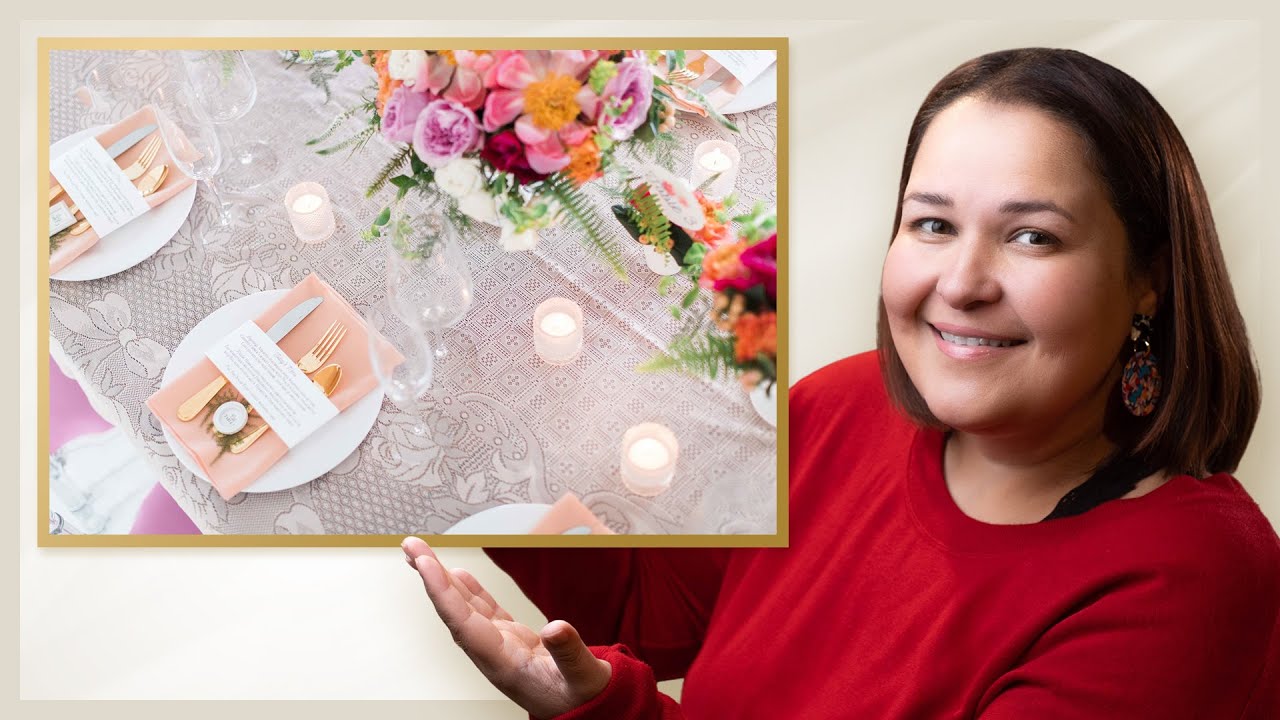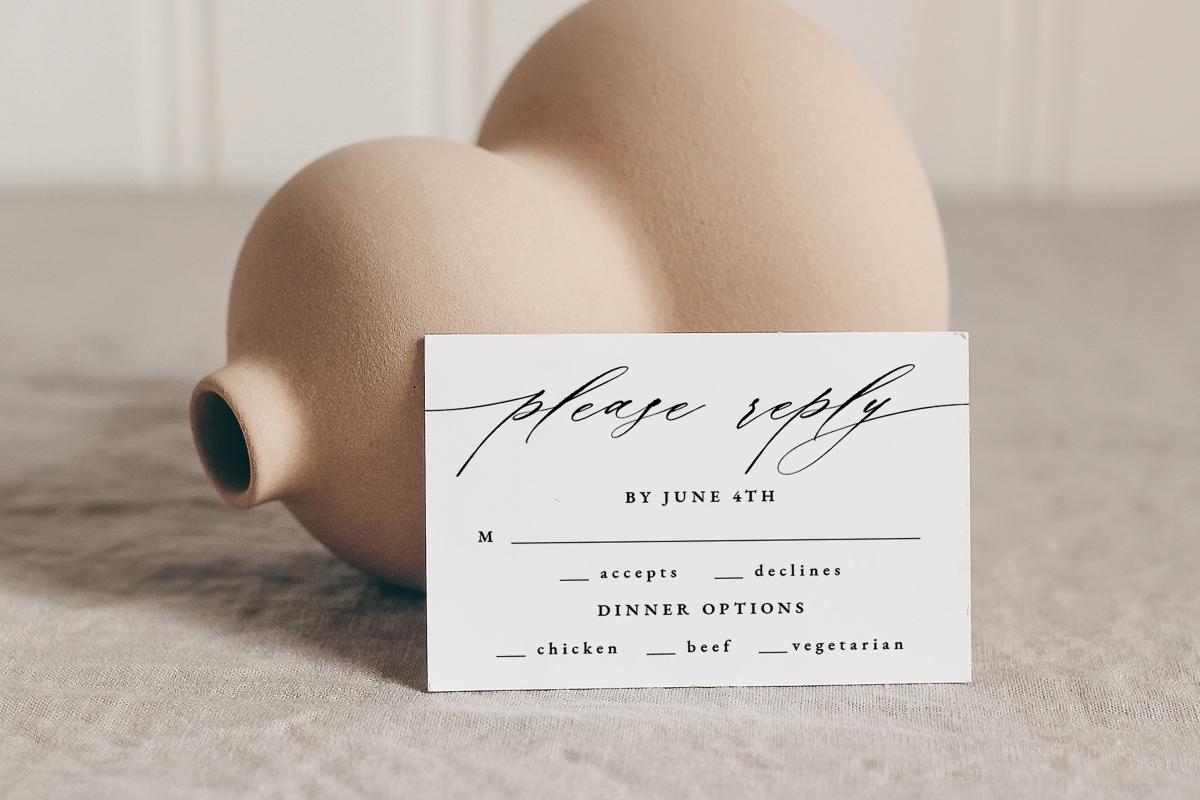Home>Dining>Events & Etiquette>How To Word A Self-Pay Dinner Invitation


Events & Etiquette
How To Word A Self-Pay Dinner Invitation
Modified: January 5, 2024
Learn the proper etiquette for wording a self-pay dinner invitation and create a memorable event with our expert tips and advice. Explore events-etiquette now!
(Many of the links in this article redirect to a specific reviewed product. Your purchase of these products through affiliate links helps to generate commission for Storables.com, at no extra cost. Learn more)
Introduction
When it comes to hosting a dinner event, it’s important to make sure that the invitation conveys all the necessary information in a clear and concise manner. One situation that may require specific attention is when organizing a self-pay dinner. In this scenario, each guest is responsible for covering their own expenses.
The wording of a self-pay dinner invitation is crucial to ensure that attendees understand the expectations and have all the necessary details. It sets the tone for the event and ensures that everyone is on the same page regarding the financial arrangements. In this article, we will explore the importance of wording in self-pay dinner invitations and provide some helpful tips to craft the perfect invitation.
So, whether you are organizing a corporate event, a social gathering, or a special celebration, read on to learn how to word a self-pay dinner invitation that will make your guests feel informed and comfortable.
Key Takeaways:
- Craft clear and inviting self-pay dinner invitations by being upfront about the arrangement, providing essential details, and suggesting the self-pay option with sincerity and appreciation.
- Ensure a smooth and enjoyable self-pay dinner event by offering clear payment instructions, managing RSVPs and follow-ups, and maintaining open communication channels with guests.
Read more: How To Cancel A Dinner Invitation
Understanding the Purpose of a Self-Pay Dinner Invitation
Before diving into the specifics of how to word a self-pay dinner invitation, it’s important to understand the purpose behind this type of event. A self-pay dinner is typically organized when a group of individuals or colleagues gets together for a meal, but instead of the host covering all the expenses, each participant is responsible for paying for their own meal.
There can be several reasons for hosting a self-pay dinner. It may be a way to ensure that everyone contributes equally to the cost, especially in a professional setting where some attendees may have restrictions on receiving gifts or favors. It can also be an opportunity to create a more casual and relaxed atmosphere, as guests are not bound by the expectation of a formal hosted event.
Additionally, self-pay dinners can be convenient for large groups or gatherings where it would be challenging for the host to handle multiple individual payments.
The purpose of a self-pay dinner invitation is to inform guests about the arrangement and provide them with all the necessary details, including the date, time, location, and payment instructions. It’s essential to communicate this information clearly to avoid any confusion or awkwardness among the attendees.
Now that we understand the purpose of a self-pay dinner invitation, let’s explore how to choose the right wording to ensure that all guests are well-informed and comfortable with the arrangement.
Choosing the Right Wording for the Invitation
When it comes to wording a self-pay dinner invitation, clarity and transparency are key. You want to ensure that your guests understand that they will be responsible for covering their own expenses. Here are some tips to help you choose the right wording for your invitation:
- Be upfront and clear: Make it clear from the beginning that it is a self-pay dinner event. You can start by using phrases like “Join us for a self-pay dinner” or “We invite you to join us for a dinner where everyone will pay for their own meals.”
- Set the tone: Depending on the nature of the event, you can choose formal, casual, or even playful wording. Consider the occasion and the relationship you have with the guests when deciding on the tone of your invitation.
- Emphasize the experience: Highlight the experience or reason for gathering. For example, if it’s a networking event, mention that it’s an opportunity for professionals to connect over a meal. If it’s a social gathering, focus on the enjoyment of good company and food.
- Include information about the venue: Provide the name and address of the restaurant or venue where the dinner will take place. This will help guests plan their transportation and familiarize themselves with the location.
- Mention the date and time: Clearly state the date and time of the event to ensure that guests can mark their calendars well in advance. Specify both the date and day of the week, as well as the starting and ending times.
- Consider dietary restrictions: If applicable, ask guests to inform you about any dietary restrictions or special requests in advance, so you can inform the restaurant or make necessary arrangements.
Remember, when choosing the wording for your self-pay dinner invitation, it’s important to strike a balance between providing clear information and maintaining a friendly and inviting tone. The goal is to make guests feel comfortable and informed about the arrangements while still creating excitement and anticipation for the event.
Including Important Details in the Invitation
When sending out a self-pay dinner invitation, it’s crucial to provide all the necessary details to ensure that guests have a clear understanding of the event. Here are some important details to include in your invitation:
- Date and Time: Clearly state the date, day, and time of the dinner. This allows guests to mark their calendars and plan accordingly.
- Location: Provide the name and address of the restaurant or venue where the dinner will be held. It’s helpful to include any specific instructions or landmarks to assist guests in finding the location.
- Theme or Purpose: If the dinner has a particular theme or purpose, such as a birthday celebration or a team-building event, mention it in the invitation. This sets the tone and helps guests prepare appropriately.
- Estimated Duration: Give guests an idea of how long the dinner is expected to last. This will allow them to plan their schedules accordingly and avoid any time conflicts.
- Contact Information: Include your contact information, such as your phone number or email address, so guests can reach out to you if they have any questions or need further clarification.
- Payment Details: Clearly state that this is a self-pay dinner and explain how the payment will be handled. If guests are required to bring cash, mention it. Alternatively, if payment will be made individually at the restaurant, provide instructions on how to settle the bill.
- RSVP Deadline: Request that guests RSVP by a specific date. This will help you get an accurate headcount and make necessary reservations or arrangements with the restaurant.
- Special Instructions: If there are any special instructions or requirements, such as dress code or whether guests should arrive early for pre-dinner drinks, include them in the invitation. This ensures that everyone is well-prepared for the event.
By including all these important details, you will provide guests with the necessary information to attend the self-pay dinner stress-free. Proper communication helps create a smooth and enjoyable experience for everyone involved.
When wording a self-pay dinner invitation, be clear and upfront about the expectation for guests to cover their own expenses. Use polite language and provide details about the venue and cost to avoid any confusion.
Suggesting the Self-Pay Option
When wording a self-pay dinner invitation, it’s essential to suggest the self-pay option in a respectful and clear manner. Here are some tips to help you effectively convey the self-pay arrangement:
- Be straightforward: Begin by stating that the dinner will be self-pay. You can say something like, “Please note that this is a self-pay dinner event” or “We kindly request that each guest covers their own expenses.”
- Explain the rationale: Provide a brief explanation of why you have chosen the self-pay approach. This could include reasons like fairness, accommodating dietary preferences, or creating a more casual atmosphere.
- Highlight the benefits: Emphasize the advantages of the self-pay arrangement. For example, mention that it allows guests to have more flexibility in choosing their preferred meal or that it helps maintain a balanced financial contribution among attendees.
- Assure affordability: If applicable, mention that the chosen restaurant or venue offers a range of affordable options to accommodate all budgets. This reassures guests that attending the dinner won’t be a financial burden.
- Express appreciation: Thank your guests in advance for their understanding and cooperation. Acknowledge their willingness to contribute to the expense and express gratitude for their participation in the event.
By suggesting the self-pay option with clarity and sincerity, you ensure that guests are well-informed and understand the reasoning behind this arrangement. Remember to strike a balance between being direct about the self-pay aspect and maintaining a warm and welcoming tone throughout the invitation.
Read more: How To Accept A Dinner Invitation
Providing Clear Instructions for Payment
When organizing a self-pay dinner, it’s important to provide clear instructions on how guests should handle the payment. This ensures that everyone knows what to expect and avoids any confusion or awkwardness when it comes time to settle the bill. Here are some guidelines for providing clear payment instructions:
- Indicate the payment method: Specify whether guests should bring cash to pay individually or if credit cards are accepted at the restaurant. If applicable, provide information on any specific payment apps or mobile payment options that guests can use.
- Mention any required pre-payment: In certain cases, such as when a group booking is required, you may need guests to pre-pay a portion or the full amount in advance. Clearly communicate this requirement so guests can make the necessary arrangements ahead of time.
- Explain how the bill will be managed: If the restaurant allows for separate checks, let guests know that they will receive individual bills for their own orders. Alternatively, if the bill will be paid collectively and then split evenly among attendees, clearly state this arrangement.
- Provide guidance on gratuity: Depending on the cultural norms or the policies of the restaurant, you may want to address the issue of gratuity. Clarify whether gratuity is included in the bill or if guests should plan to leave a separate tip.
- Offer assistance if needed: Inform guests that if they have any questions or concerns regarding payment, they can reach out to you for assistance. Be prepared to answer queries promptly to alleviate any potential confusion.
When providing payment instructions, it’s crucial to be as specific as possible, leaving no room for ambiguity. Guests should feel confident about how to handle the payment process, allowing them to relax and enjoy the dinner without any concerns about financial matters.
RSVP and Follow-up
As part of the self-pay dinner invitation, it’s important to include a request for RSVP and follow-up with guests to ensure an accurate headcount and smooth event planning. Here are some guidelines for managing RSVPs and follow-ups:
- Include an RSVP deadline: Clearly state the date by which guests should RSVP. This gives you ample time to make reservations or necessary arrangements with the restaurant.
- Provide multiple RSVP options: Offer guests different methods to RSVP, such as via email, phone call, or online RSVP platforms. This allows them to choose the option that is most convenient for them.
- Follow up with non-responders: A few days before the RSVP deadline, follow up with those who have not yet responded. Kindly remind them to RSVP and ask for their confirmation or regrets.
- Confirm attendance and final details: Once you have received the RSVPs, send a confirmation email or message to all attendees. Include any final details, such as the meeting point or any last-minute updates.
- Ask for special requests or dietary restrictions: In the follow-up communication, remind guests to inform you of any special requests or dietary restrictions they may have. This allows you to make necessary accommodations and ensure everyone’s needs are met.
- Send a reminder closer to the event: A day or two before the self-pay dinner, send a friendly reminder to all attendees. Confirm the date, time, and location, and reiterate any important details or instructions related to payments or arrival times.
Following up with guests not only helps you manage the event logistics effectively but also shows that you value their presence and want to ensure their comfort and enjoyment during the dinner.
Remember to maintain open communication channels throughout the RSVP process, promptly addressing any questions or concerns raised by guests. This will further enhance the overall guest experience and make them feel valued and well taken care of.
Conclusion
Crafting a well-worded self-pay dinner invitation is essential for ensuring a successful and enjoyable event. By following these tips and guidelines, you can effectively convey the details, expectations, and arrangements to your guests.
Start by clearly stating from the beginning that the dinner will be a self-pay event, while also highlighting the reasons behind this arrangement. Be upfront and transparent about the financial expectations, but do so in a warm and inviting tone.
Include all important details in the invitation, such as the date, time, location, and any special instructions or requirements. Provide clear instructions on how guests should handle the payment process, whether it is cash, credit cards, or other methods of payment.
Request RSVPs and follow up with guests to ensure an accurate headcount and make any necessary arrangements with the venue. Confirm attendance and share final details in a timely manner, and be responsive to any special requests or dietary restrictions.
In summary, a well-worded self-pay dinner invitation sets the tone for a smoothly run event where everyone is informed and comfortable. By ensuring clear communication and providing all necessary information, you create an enjoyable dining experience for all attendees.
When organizing any event, from a corporate meal to a social gathering or a special celebration, it’s important to set your table with care and attention to detail. Utilize these tips to craft the perfect self-pay dinner invitation and host a successful event that will be remembered for all the right reasons.
Frequently Asked Questions about How To Word A Self-Pay Dinner Invitation
Was this page helpful?
At Storables.com, we guarantee accurate and reliable information. Our content, validated by Expert Board Contributors, is crafted following stringent Editorial Policies. We're committed to providing you with well-researched, expert-backed insights for all your informational needs.















0 thoughts on “How To Word A Self-Pay Dinner Invitation”